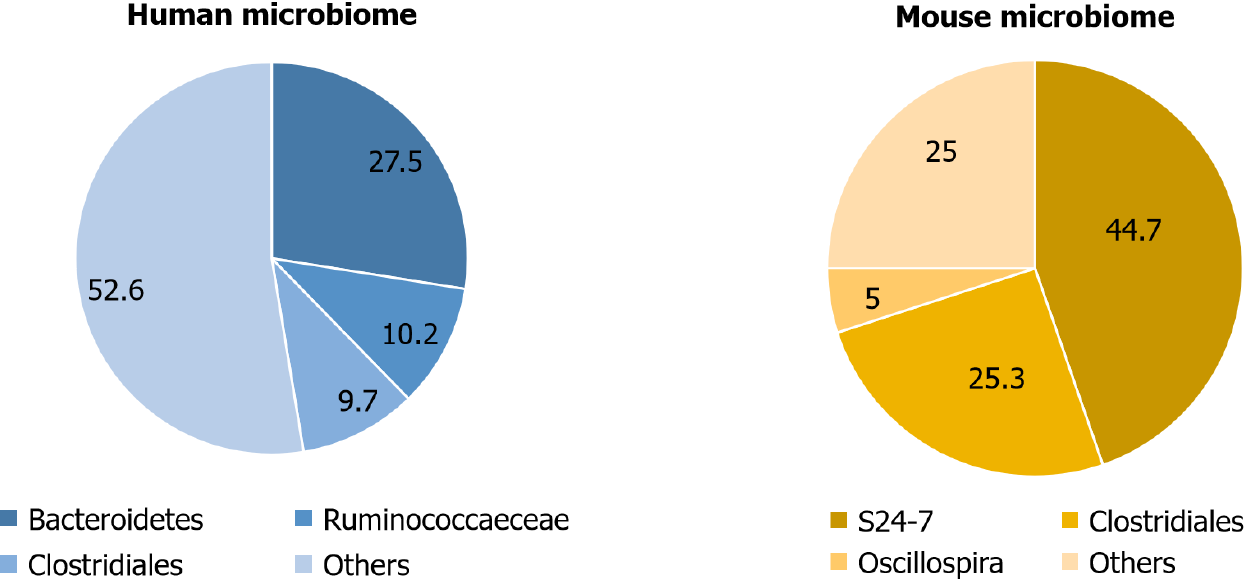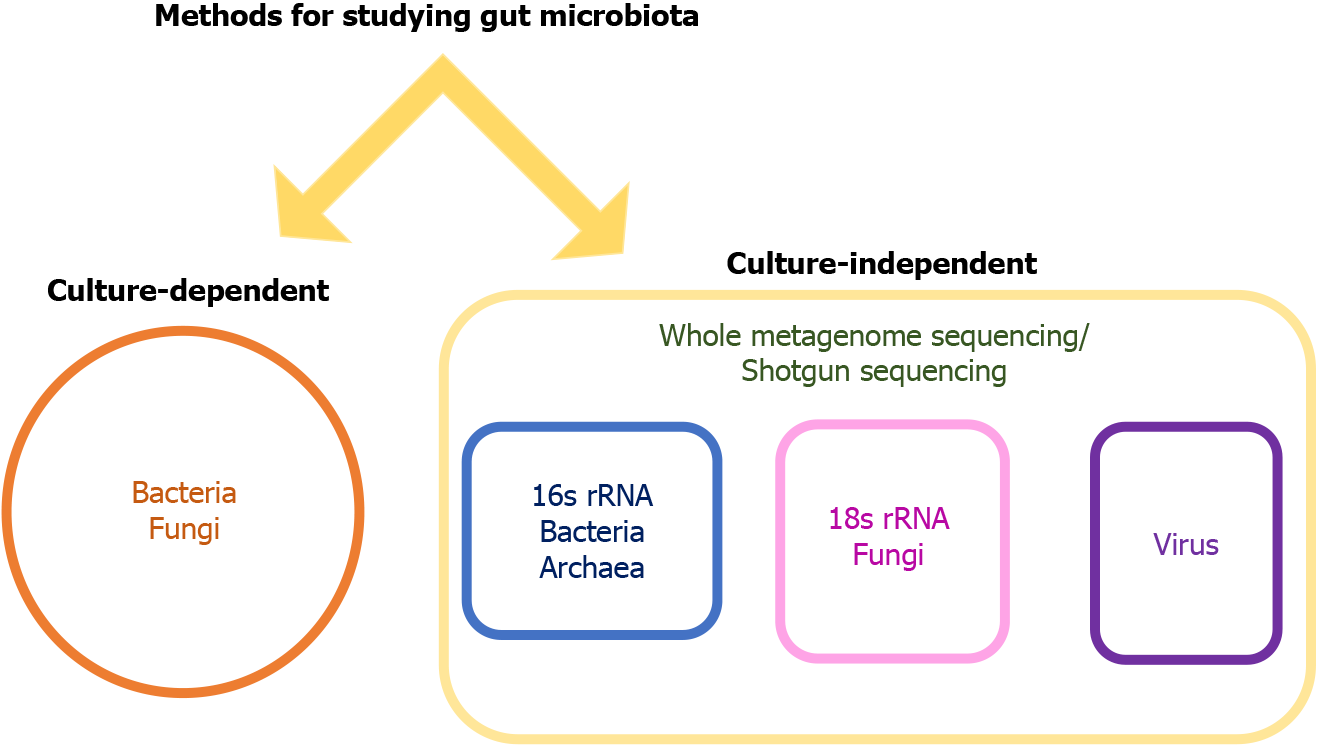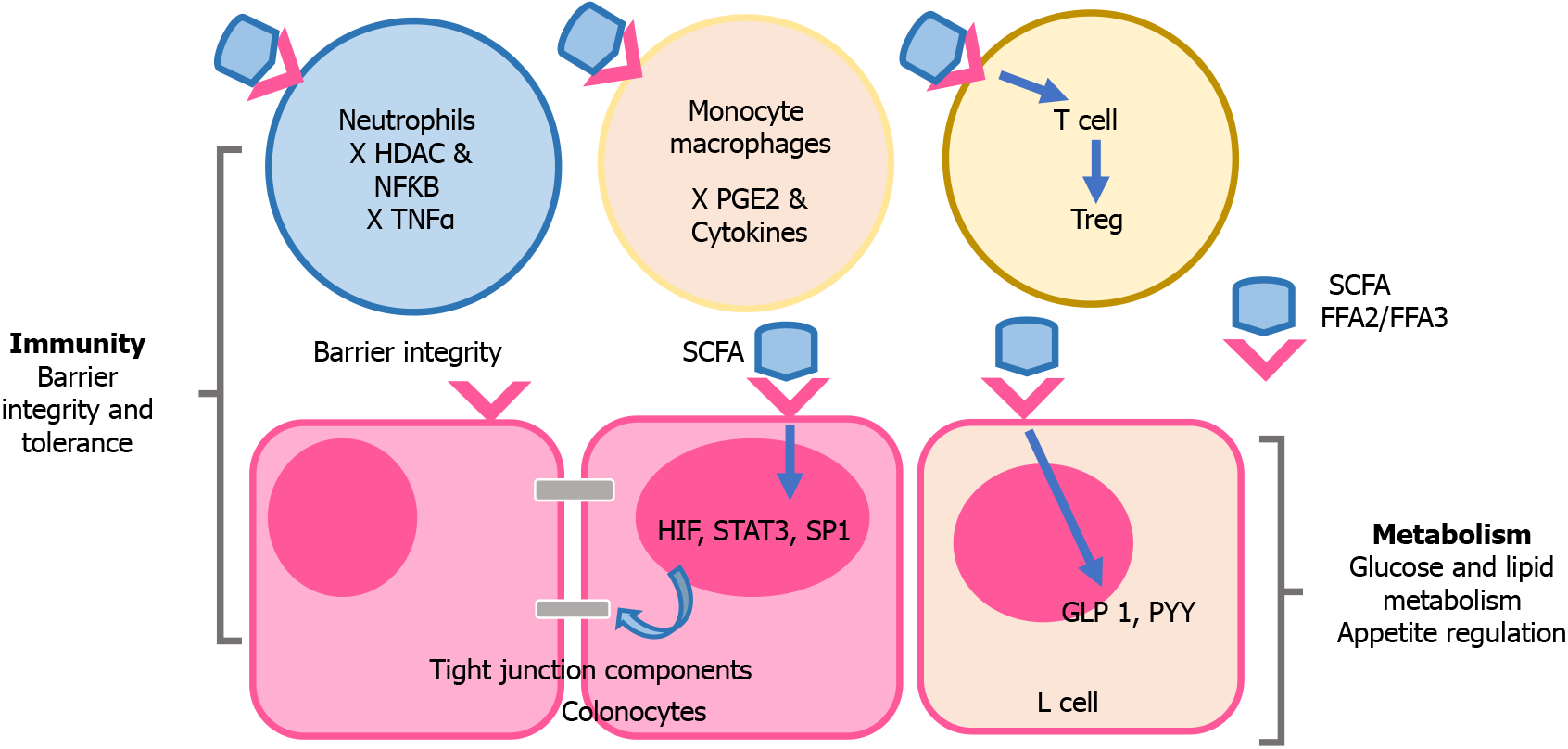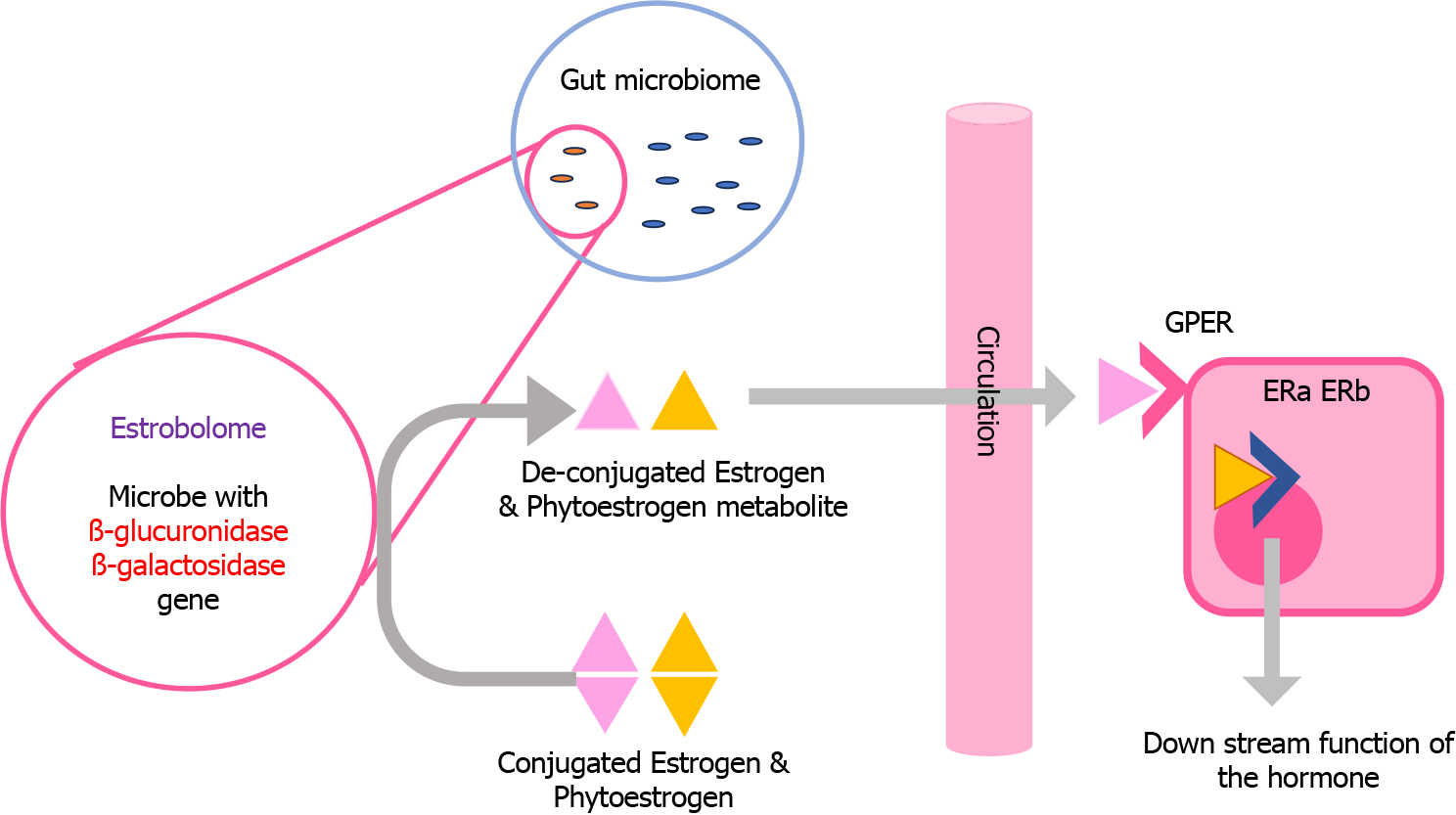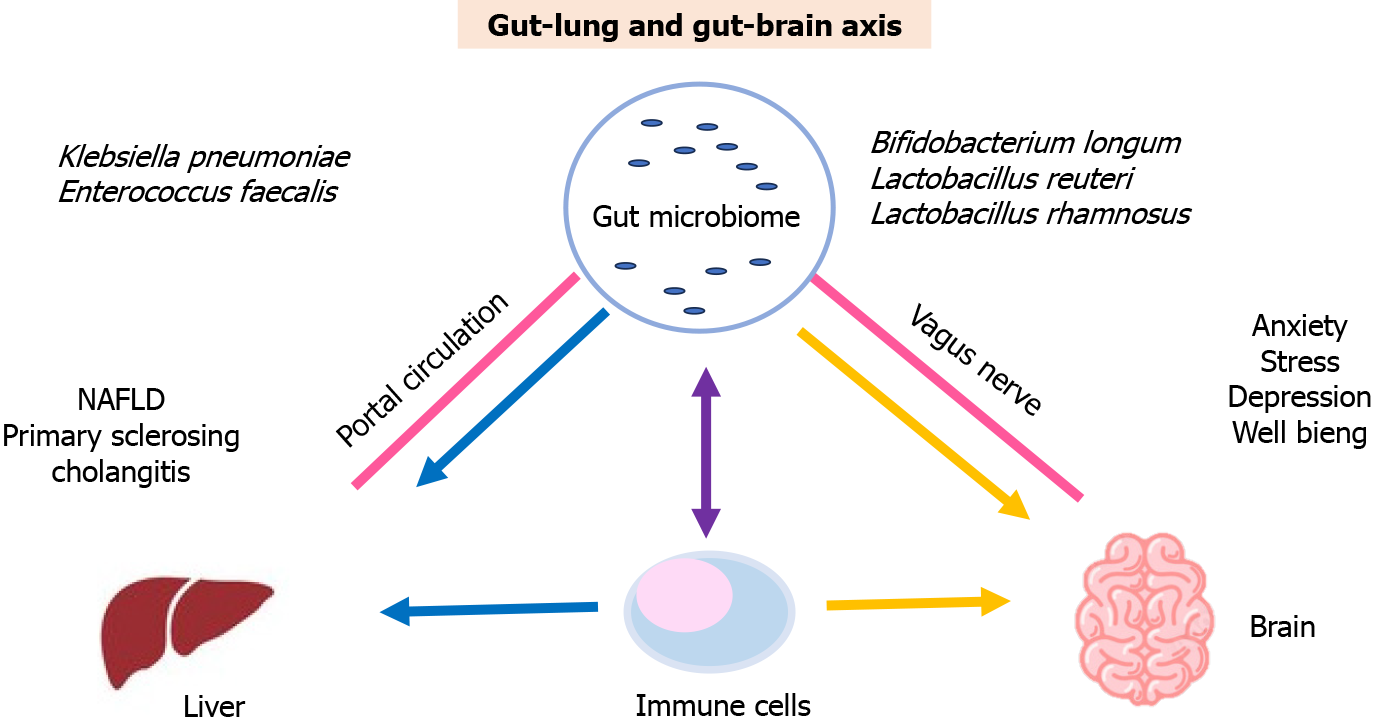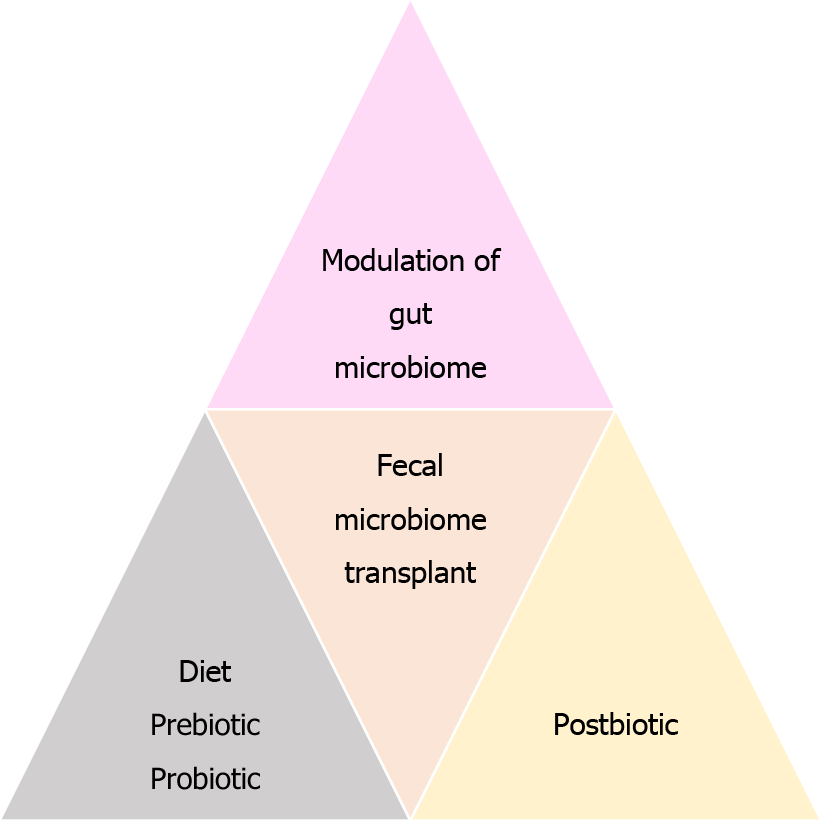Copyright
©The Author(s) 2024.
World J Immunol. Jul 25, 2024; 14(1): 96209
Published online Jul 25, 2024. doi: 10.5411/wji.v14.i1.96209
Published online Jul 25, 2024. doi: 10.5411/wji.v14.i1.96209
Figure 1 Healthy or equilibrium state of the gut microbiome is characterized by a high microbial diversity, which favors functional diversity and microbe-microbe and host-microbe interactions.
When perturbation of this ecosystem occurs the microbe composition may shift to an alternative healthy state that differs from the initial state but maintains the same functionality.
Figure 2 Similarities of the human and mouse gut microbiomes by percentage.
Figure 3 Methods of studying the gut microbiota.
Figure 4 Short-chain fatty acids participate in maintaining intestinal/colonic mucosal integrity by upregulating the expression of tight junction proteins.
They induce immune tolerance by downregulation of histone deacetylase and NFB, manipulating proinflammatory gene expression by inhibition of tumor necrosis factor, prostaglandin E2, etc thereby resulting in formation of more Treg cells. SCFAs promote production of glucagon like peptide 1 and pancreatic peptide YY by binding to the free fatty acid receptor 2/3 of the intestinal endocrine L cells thereby controlling the appetite of the host along with glucose and lipid metabolism. FFA2/3: Free fatty acid receptor 2/3; GLP1: Glucagon like peptide 1; PEG2: Prostaglandin E2; PYY: Pancreatic peptide YY; SCFA: Short-chain fatty acids.
Figure 5 Estrobolome refers to the aggregation of enteric bacterial genes (ß-glucuronidase and ß-galactosidase) whose products metabolize conjugated estrogens to its free form, which can be returned to the circulation.
Era: Estrogen receptor alpha; ERb: Estrogen receptor beta; GPER: G protein coupled estrogen receptor 1.
Figure 6 The gut is directly connected to the liver by the portal system and directly connected to the brain by the vagus nerve.
Microbial metabolites can directly influence this organ through these connections and indirectly influence these organs by regulating the immune system. NAFLD: Non-alcoholic fatty liver disease.
Figure 7 Balance of the abundance of positive and negative microbiome taxa governs manifestation of diseases like diabetes and inflammatory bowel disease.
Figure 8 Modulation of the microbiome by diet, prebiotics, probiotics, postbiotics, and fecal transplantation as therapeutic interventions against dysbiosis-associated disease.
- Citation: Marik A, Biswas S, Banerjee ER. Exploring the relationship between gut microbial ecology and inflammatory disease: An insight into health and immune function. World J Immunol 2024; 14(1): 96209
- URL: https://www.wjgnet.com/2219-2824/full/v14/i1/96209.htm
- DOI: https://dx.doi.org/10.5411/wji.v14.i1.96209










